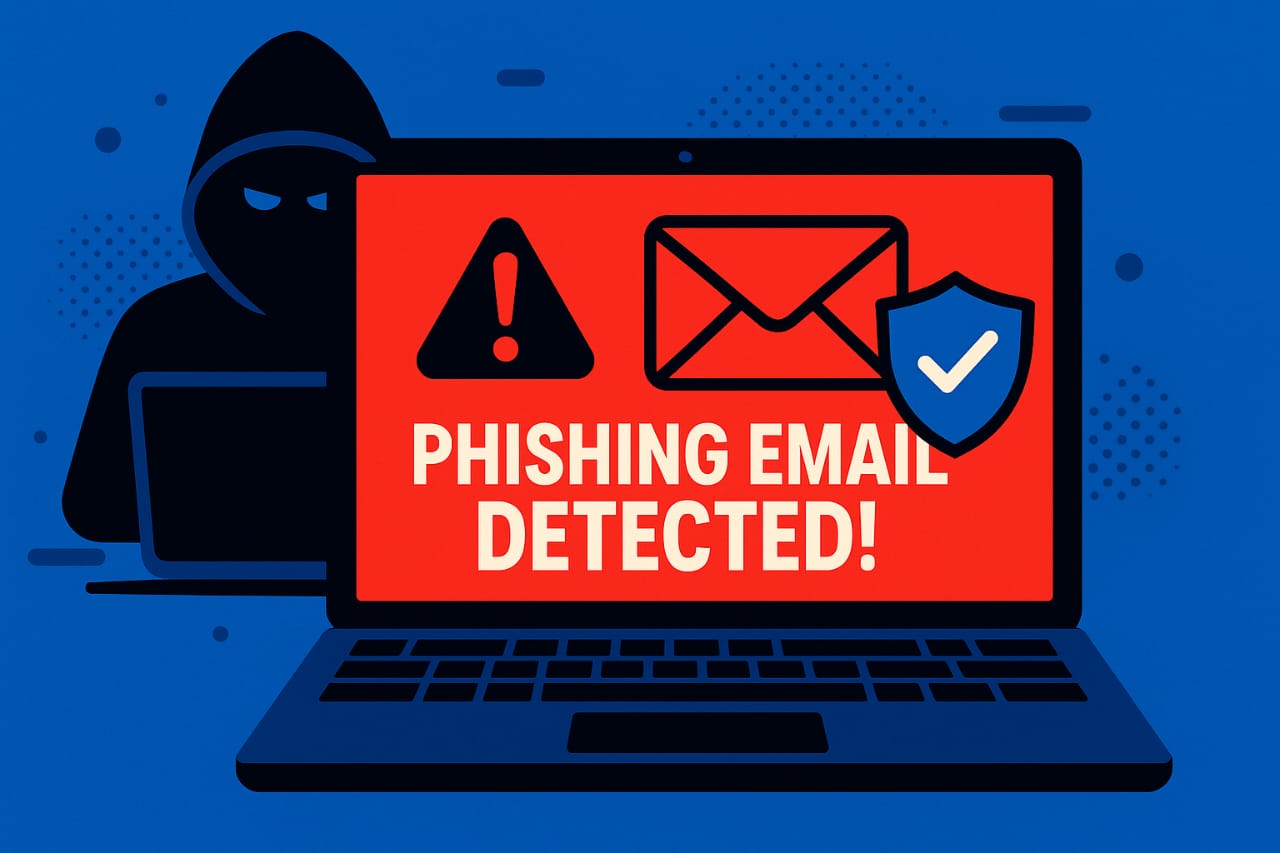Learn how to detect phishing emails like a pro in 2025. This complete guide reveals the latest signs of phishing attempts, real-world examples, and how to protect your inbox from cybercriminals. Whether you’re a student, remote worker, or small business owner in the U.S., understanding how phishing works is key to staying safe online. We’ll show you the common red flags, sneaky tricks scammers use, and the best tools and strategies to block them.
1-What Is Phishing Email Detection?
Phishing email detection is the process of identifying fake or malicious emails designed to steal your personal information—like passwords, bank details, or login credentials. In 2025, phishing scams have grown smarter, using AI-generated content, cloned websites, and even urgent-sounding alerts to trick users—especially in the U.S.
2-Why Is Phishing Email Detection So Important in 2025?
Phishing is now the most common cyber attack in the United States. According to FBI reports, Americans lost over $10 billion in online scams last year. Phishing emails are responsible for a large chunk of these losses. If you’re not trained to spot them, one wrong click could compromise your entire identity. RELATED
🔍 3-How to Detect a Phishing Email: Top Signs
- Suspicious Sender Address
Check the email domain (the part after @). A genuine email from PayPal, for example, will never come from paypal-support@zzmail.info.
- Urgent or Threatening Language
Phrases like “Act Now!”, “Your Account Will Be Closed”, or “Final Warning” are common red flags.
- Grammar and Spelling Errors
Most phishing emails contain typos, poor sentence structure, or inconsistent formatting.
- Fake Login Links
Hover over links before clicking. If the URL doesn’t match the official website (e.g., paypal.com), it’s likely a trap.
- Unusual Attachments
Unexpected files in .zip, .exe, or .scr format are dangerous and often contain malware.
👀 Real Examples of Phishing Emails in 2025
In recent months, attackers have sent emails claiming:
“Your Netflix account has been suspended”
“You missed a USPS delivery – update your address”
“New login detected on your Google Account”
These all appear real—but they lead to cloned websites that steal your login info.
🛡 How to Protect Yourself from Phishing Emails
✅ Enable 2FA (Two-Factor Authentication)
Even if your password gets stolen, 2FA stops unauthorized access.
✅ Use a Secure Email Provider
Providers like Gmail now include phishing detection AI that warns you of dangerous emails.
✅ Install a Trusted VPN
A VPN encrypts your connection, making it harder for attackers to steal data via unsecured networks (like public Wi-Fi).
👉 Check our blog: Best VPNs for Secure Public Wi-Fi Browsing in 2025
✅ Keep Your Software Updated
Browser and antivirus updates include new phishing detection tools.
🧠 Best Tools for Phishing Email Detection in 2025
Google Safe Browsing
Microsoft Defender SmartScreen
PhishTank (Crowdsourced Threat List)
Mailwasher or Clean Email (Spam filters)
📱 How to Detect Phishing Emails on Mobile Devices
Most people check emails on phones, making mobile phishing detection critical.
Don’t click links from unknown sources
Turn off “auto-download” for attachments
Use email apps with phishing protection (like Outlook or ProtonMail)
🚨 What to Do If You Clicked a Phishing Email
- Immediately disconnect from the internet
- Run a full antivirus scan
- Change passwords to affected accounts
- Enable 2FA on all services
- Report the phishing email to the FTC (reportfraud.ftc.gov)
🔗 Related Blogs You’ll Find Helpful
Types of Cyber Attacks: Complete Guide 2025
What is Cybersecurity? Beginner’s Guide 2025
Final Thoughts: Stay Smart, Stay Safe
Phishing email detection is not just for IT experts anymore. In 2025, every internet user needs to learn the basics. With smart awareness, updated tools, and simple habits, you can protect your personal data—and your peace of mind.

2 thoughts on “Phishing Email Detection in US: How to Spot and Stop Scams in 2025”